North America Smart Homes Market Size
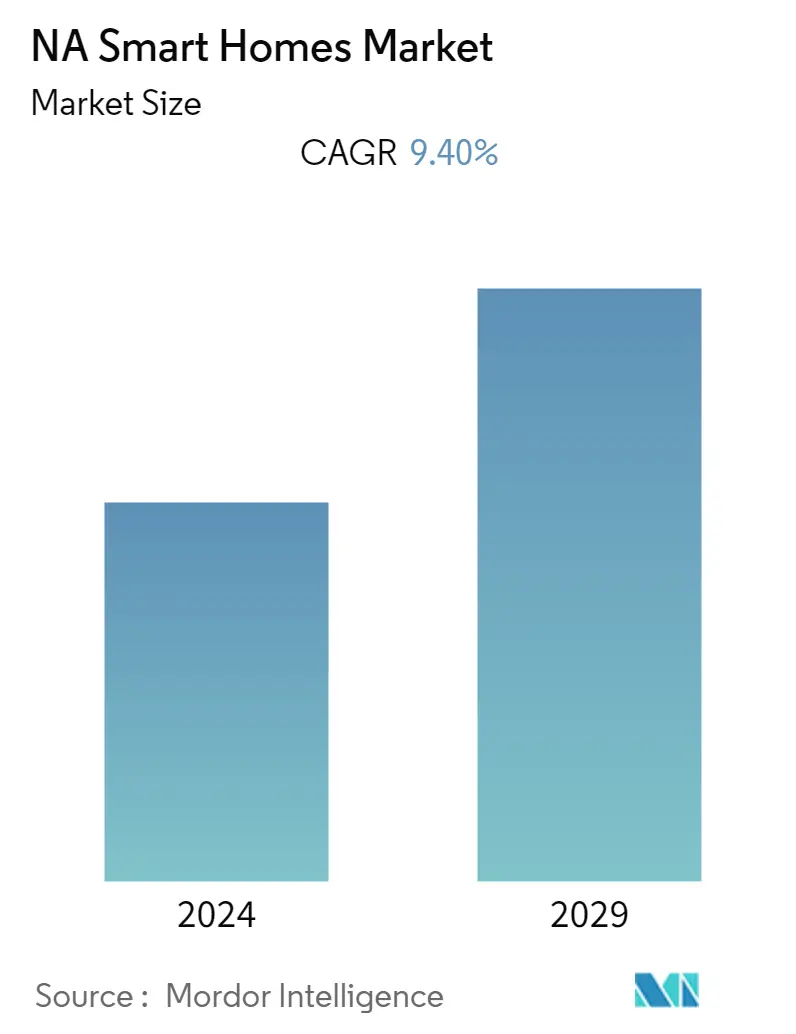
| Study Period | 2019 - 2029 |
| Base Year For Estimation | 2023 |
| Forecast Data Period | 2024 - 2029 |
| Historical Data Period | 2019 - 2022 |
| CAGR | 9.40 % |
| Market Concentration | High |
Major Players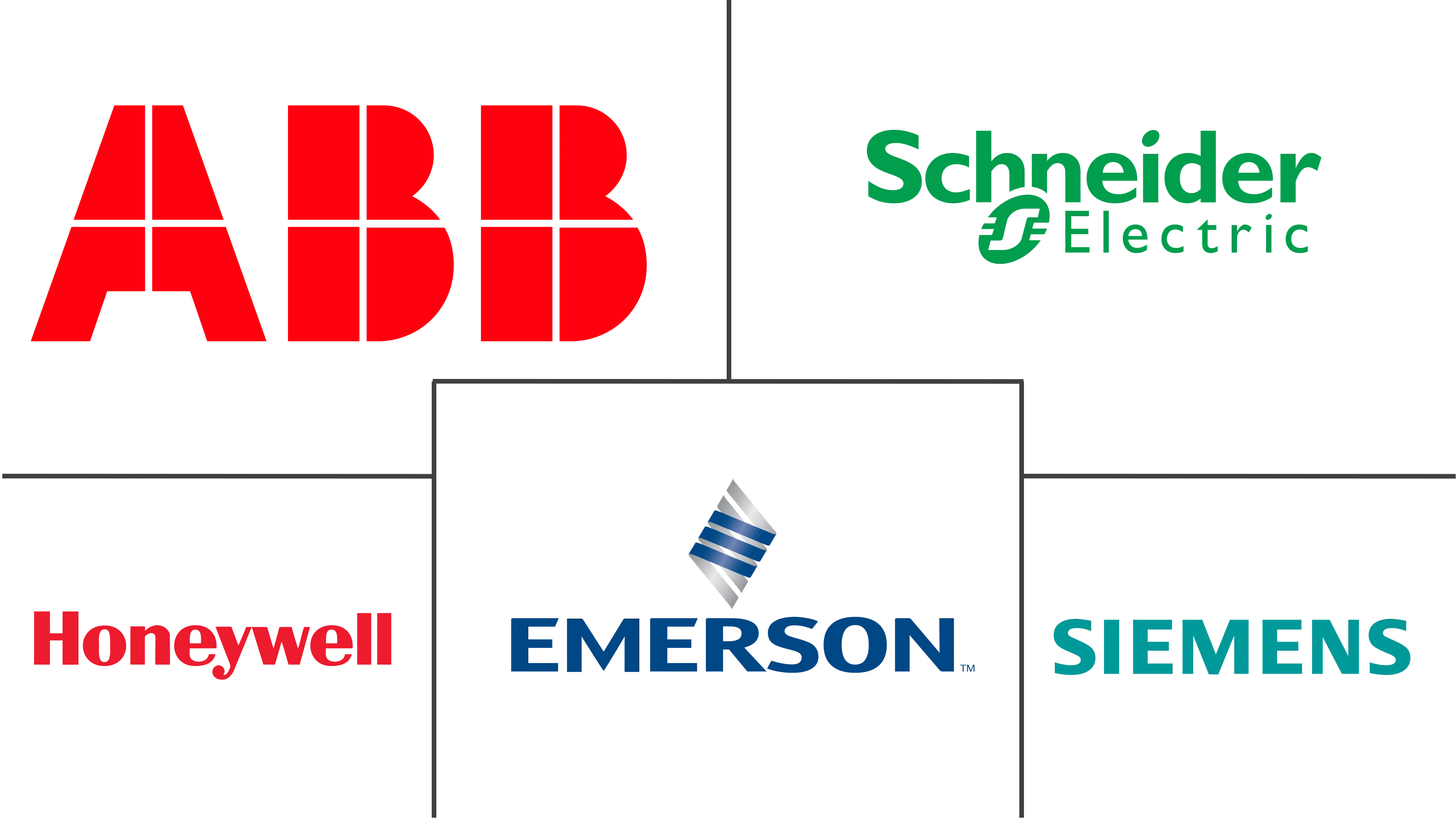
*Disclaimer: Major Players sorted in no particular order |
North America Smart Homes Market Analysis
The North America Smart Homes Market is expected to grow at a CAGR of 9.4% over the forecast period 2021-2026.
- With the significant rollout of 5G in the United States and improved Wi-Fi technology, such as Wi-Fi 6, smart home devices may be linked by faster, more powerful networks, meaning better access to processing and data resources in the cloud. 5G technology is also revolutionizing IoT services' delivery, including smart home technology, as it allows devices to work free of wires and cables while consuming a minimal amount of power.
- AT&T, Verizon, T-Mobile, and Sprint launched their 5G wireless networks toward the end of 2020. Hence, 5G is currently available to customers in select cities across the United States. However, it is expected to take a few years before full-fledged, top-speed 5G coverage is available across the country, like 4G LTE. T-Mobile also announced that it would be launching a 5G - based home network by 2024. The aim is to extend coverage to previously underserved rural areas across the United States. It is currently offering a trial version of the service on its 4G LTE network to a select number of T-Mobile customers.
- In the region, the increasing demand for energy-efficient solutions is a major trend that is leading towards the adoption of the smart home solution. According to the US Energy Information Administration, the average household in the United States consumed 20.75 quadrillion BTUs of energy in 2020, where a sign of that energy is being wasted. According to US DoE, the average household used energy that released an estimated 17,320 lbs. of CO2. To put this number in another perspective, on an annual basis, the average household is responsible for releasing 70% more CO2 emissions in comparison to the average passenger vehicle. Such instances are addressing the demand for smart home solutions.
- ValuePenguin surveyed more than 1,000 individuals and found that those concerned with the environment are purchasing smart home devices at a faster rate. 65%% of Americans have at least one smart home device, and many purchased the smart technology because it's better for the environment. The most popular smart home devices among the respondents included speakers (31%), thermostats (24%), and lighting (20%).
- Further, smart speakers are essential because they represent a new interactive digital endpoint in the home that now provides access to over one-third of US adults. This digital endpoint is available to market pioneers such as Amazon and Google to third-party voice app developers. The rise in video chatting has spurred growth in smart speakers with a display.
- The consumer's propensity to adopt security solutions is on the rise due to the pandemic and the uncertainty of returning to normal life. The aspect of a 'smart home' is looking more practical in the 'new normal,' post-COVID-19. Currently, it is not about efficiencies or smart usages, like smart options of switching on of a luminaire or an HVAC, but the practical reality of ensuring fewer instances of touching, if not doing away altogether, off switches to switch on any appliance.
North America Smart Homes Market Trends
This section covers the major market trends shaping the North America Smart Homes Market according to our research experts:
Demand and Growth of Smart Appliances to drive the market
- Connected large appliances, such as fridges, washing machines, and dishwashers, and connected small appliances, such as coffee machines, microwaves, and vacuum and mowing robots, are the major Smart Appliances in the region.
- Many of the major and renowned companies are based in the United States. The US-based market vendors have a good reputation for innovative products. However, most of these companies outsourced their manufacturing activities and focused their engineering on design and technology upgradation.
- In the recent 2020 national HomeAdvisor survey, Texas homeowners responded to polling about the growing use of Smart Refrigerator, Smart Oven, and Smart Coffee Maker in the states. Most of the smart kitchen appliance owners are high, focusing on eco-friendly appliances.
- From useful notifications, energy-efficient appliances to Wi-Fi-enabled features, smart home kitchen-based appliances are being upgraded with added functionality. For example, smart microwaves can now scan barcodes on food items and download cooking instructions with seamless integration, with AI voice assistants, for a completely hands-free experience.
- At CES 2020, the smart home segment featured small appliance (coffee-makers, vacuum and mowing products, etc.) products highlighting specific characteristics. The allied smart kitchen appliances featured capabilities that assisted consumers in improving cooking speed and accuracy, making informed choices for meal preparation, enhancing wellness, and simplifying cleaning chores, among others.
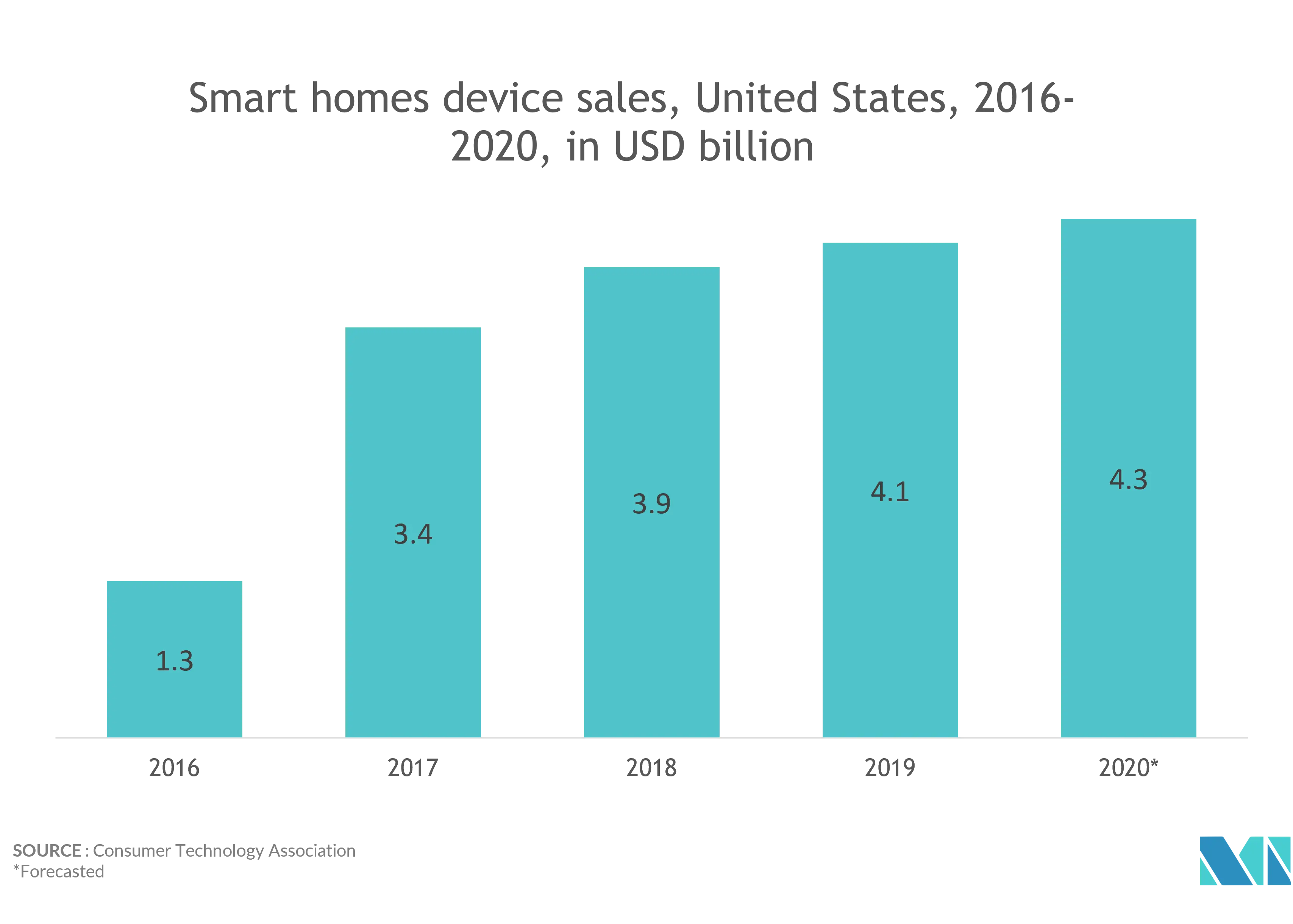
Growing Need for Automation and Security Systems to drive the market
- According to Thales Group, 2020 was the year that connected home alarm systems would overtake traditional alarm services, 63 million US households are poised to have a home security system by 2024, and more than half (56%) of consumers preferred to switch home security provider if it meant they could monitor their home with a smartphone.
- Conventional security panel systems are evolving, and vendors are introducing new services, everything from door lock monitoring to temperature control and fire prevention systems. Significant players are entering the home automation and security sector, including Amazon, Apple, and Google. All of whom have considerable power to attract vast swathes of the market. Simultaneously, technology is getting more affordable, and many start-up companies are entering an already crowded marketplace with cellular home security offerings.
- Smart home products have been witnessed to be used as part of a botnet to send out spam emails and run distributed denial of service (DDoS) attacks. These appliances have personal credentials of private accounts, that is, ranging from Google Calendar to Wi-Fi password. As appliance manufacturer companies add more smart features, making offerings secure has been a significant challenge.
- For homes with a home Wi-Fi network, a hacked router opens a lot of vulnerabilities where cybercriminals can access the computers, devices, personal information, and security cameras such as baby monitors and CCTV. If a smart home's router is hacked, cybercriminals will have complete access to the system in which connected systems and appliances are compromised.
- The region is a prominent market globally, owing to the growing adoption of smart home technology and products. According to the National Council For Home Safety and Security (Alarms.org) study, more than 3 in five Americans claim security is the top benefit for owning a smart home.
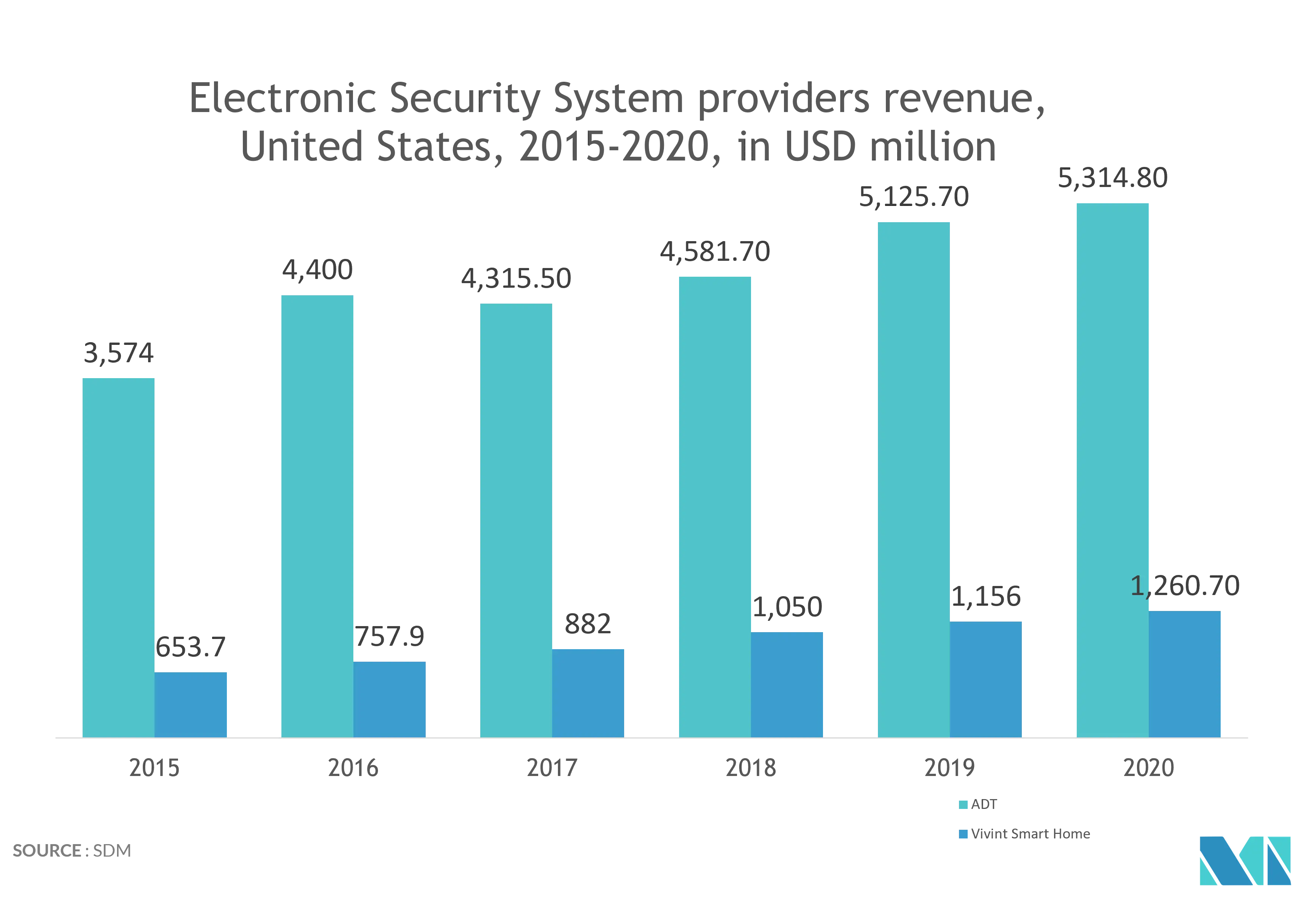
North America Smart Homes Industry Overview
The North America Smart Homes Market is Highly concentrated and has high competition for the market share. The presence of market leaders such as ABB ltd., Schneider Electric, Honeywell International makes the market consolidated.
- February 2021 - ADT Inc. and DISH Network Corporation announced a partnership whereby DISH will begin marketing, sales, and installation services for ADT smart home security products.
- August 2020 - Google and ADT have formed a long-term partnership to create the next generation of smart home security products. The partnership will combine Google's hardware and services and ADT's DIY and professionally installed smart home security solutions to innovate the residential security industry.
North America Smart Homes Market Leaders
-
ABB Ltd.
-
Honeywell International Inc.
-
Schneider Electric SE
-
Emerson Electric Co.
-
Siemens AG
*Disclaimer: Major Players sorted in no particular order
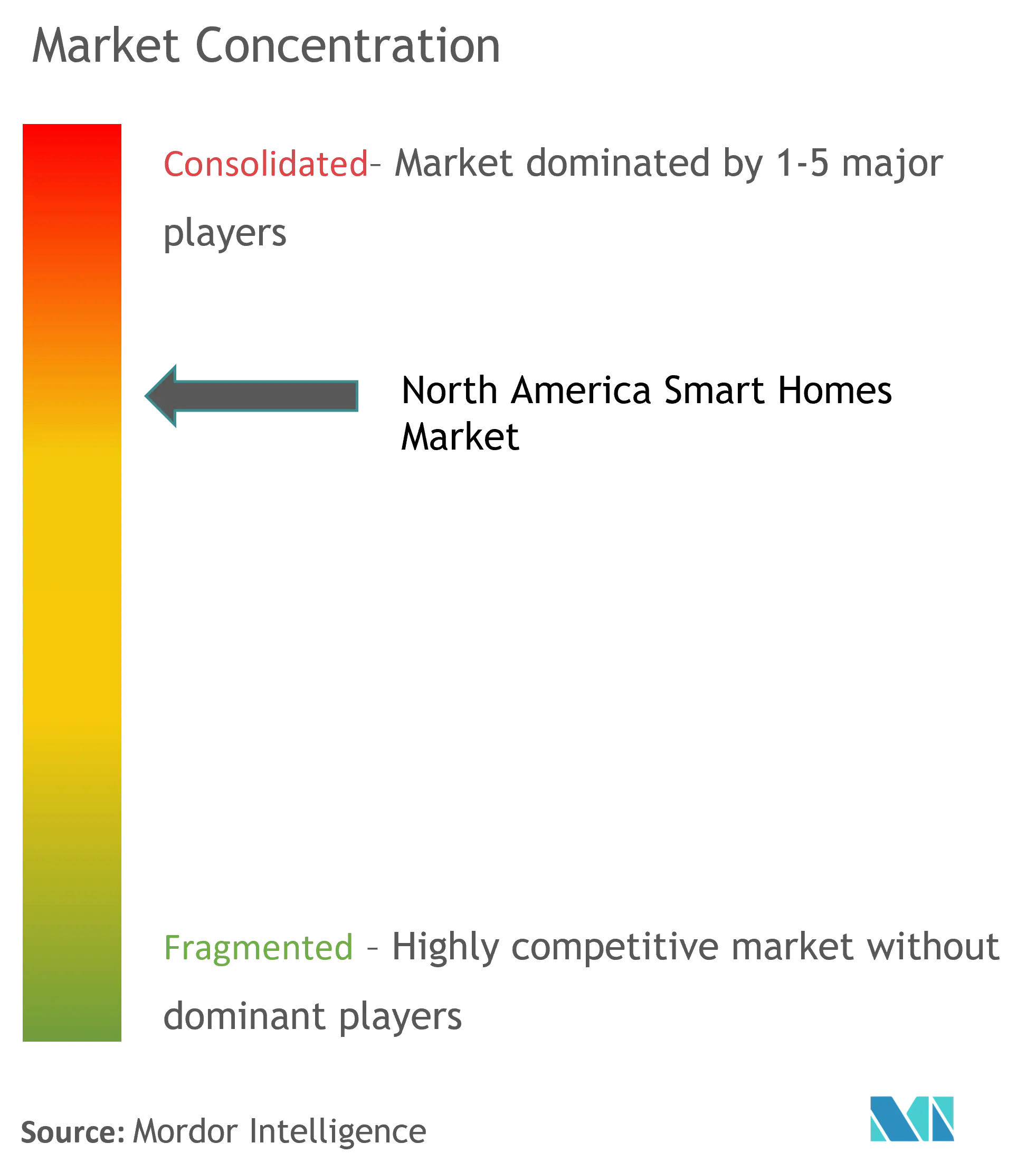
North America Smart Homes Market News
- November 2020 - Schneider Electric announced an additional USD 40 million investment toward modernizing its United States manufacturing plants in Iowa, Kentucky, Nebraska, and Texas. The investment will go towards innovative technologies and new product lines that will help increase the company's capacity of operations in the country for its customers and further develop its local workforce.
- March 2020 - ABB launched the ABB-free@home flex to give users control over blinds and lights from a mobile device without the need for additional wiring. With its Bluetooth connection, it can easily control smart room devices to increase comfort and improve energy efficiency. In response to the increasing demand for smart home systems that allow homeowners to manage their devices in the most efficient and sustainable way, ABB has developed this solution that enables end-users to 'smarten' up any room in their home.
North America Smart Homes Market Report - Table of Contents
1. INTRODUCTION
- 1.1 Study Assumptions and Market Definition
- 1.2 Scope of the Study
2. RESEARCH METHODOLOGY
3. EXECUTIVE SUMMARY
4. MARKET INSIGHTS
- 4.1 Market Overview
- 4.2 Assessment of Impact of COVID-19 on the Market
-
4.3 Technology Snapshot
- 4.3.1 Technology Overview
- 4.3.2 Protocols Used in Smart Home Systems
5. MARKET DYNAMICS
-
5.1 Market Drivers
- 5.1.1 Increasing Demand for Energy Efficient Solutions
- 5.1.2 Growing Need for Automation of Security Systems
-
5.2 Market Restraints
- 5.2.1 High Installation and Replacement Costs Along With Privacy Concerns
- 5.3 Market Opportunities
- 5.4 Current Market Trends
6. BY TECHNOLOGY
- 6.1 Bluetooth
- 6.2 Wi-Fi
- 6.3 GSM/GPRS
- 6.4 ZigBee
- 6.5 RFID
- 6.6 EnOcean
- 6.7 Z-wave
7. BY PRODUCT TYPE
- 7.1 Security and Surveillance Systems
- 7.2 Lighting Systems
- 7.3 HVAC Controls
- 7.4 Energy Management
- 7.5 Entertainment Controls
8. BY COUNTRY
- 8.1 United States
- 8.2 Canada
9. COMPETITIVE LANDSCAPE
-
9.1 Company Profiles
- 9.1.1 ABB Limited
- 9.1.2 Emerson Electric Co.
- 9.1.3 Honeywell International Inc.
- 9.1.4 Schneider Electric SE
- 9.1.5 Siemens AG
- 9.1.6 LG Electronics Inc.
- 9.1.7 Cisco Systems Inc.
- 9.1.8 Google Inc. (Alphabet Inc)
- 9.1.9 Microsoft Corporation
- 9.1.10 GE Appliances (Haier Group)
- 9.1.11 IBM Corporation
- 9.1.12 Legrand SA
- 9.1.13 Lutron Electronics Co. Inc.
- 9.1.14 United Technologies Corporation
- 9.1.15 Smart Home Inc.
- 9.1.16 Control4 Corporation
- *List Not Exhaustive
10. INVESTMENT ANALYSIS
11. FUTURE OF THE MARKET
** Subject To AvailablityNorth America Smart Homes Industry Segmentation
Home automation and smart homes are two ambiguous terms used in reference to a wide range of monitoring solutions that control and automate functions in a home. Unlike simple home automation solutions (which could range from motor-operated garage doors to automated security systems), smart home systems require a web portal or a smartphone application as a user interface to interact with an automated system.
The North America Smart Homes Market is Segmented by Technology (Bluetooth, Wi-Fi, GSM/GPRS, ZigBee, RFID, EnOcean, Z-Wave), By Product Type (Security and Surveillance Systems, Lighting Systems, HVAC Controls, Energy Management, Entertainment Controls, Others), By Geography (United States, Canada).
North America Smart Homes Market Research FAQs
What is the current NA Smart Homes Market size?
The NA Smart Homes Market is projected to register a CAGR of 9.40% during the forecast period (2024-2029)
Who are the key players in NA Smart Homes Market?
ABB Ltd., Honeywell International Inc., Schneider Electric SE, Emerson Electric Co. and Siemens AG are the major companies operating in the NA Smart Homes Market.
What years does this NA Smart Homes Market cover?
The report covers the NA Smart Homes Market historical market size for years: 2019, 2020, 2021, 2022 and 2023. The report also forecasts the NA Smart Homes Market size for years: 2024, 2025, 2026, 2027, 2028 and 2029.
North America Smart Homes Industry Report
Statistics for the 2024 North America Smart Homes market share, size and revenue growth rate, created by Mordor Intelligence™ Industry Reports. North America Smart Homes analysis includes a market forecast outlook 2029 and historical overview. Get a sample of this industry analysis as a free report PDF download.



